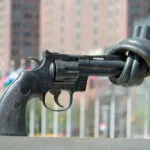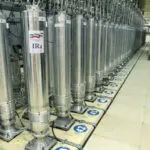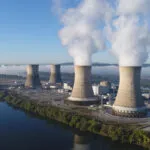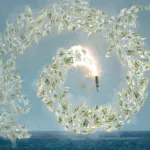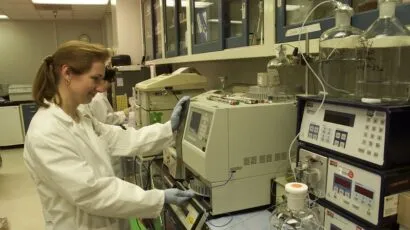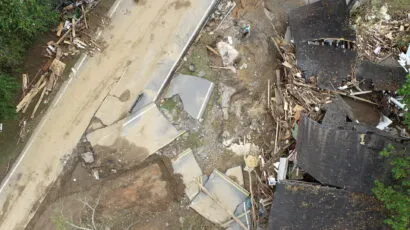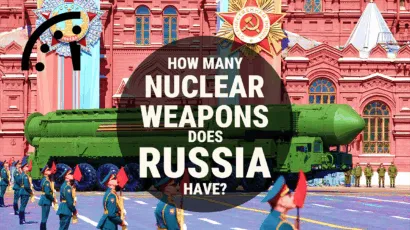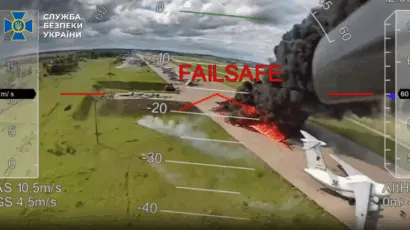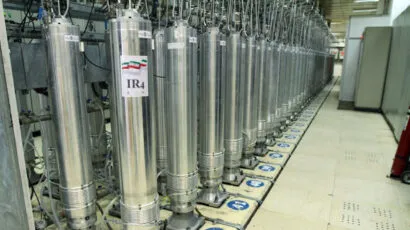Video: How many nuclear weapons does Russia have in 2025?
By Erik English | June 5, 2025
Thumbnail photos: Potorochin / Depositphotos.com; President of the Russian Federation; Ivan Shilov / Unsplash.com
Since 1987, the Bulletin of the Atomic Scientists has published the Nuclear Notebook, an authoritative accounting of world nuclear arsenals compiled by top experts from the Federation of American Scientists. Today, it is prepared by Hans M. Kristensen, Matt Korda, Eliana Johns, and Mackenzie Knight-Boyle of FAS. The video above is based on their installment on Russian nuclear weapons, 2025.
VIDEO TRANSCRIPT
How many nuclear weapons does Russia have in 2025?
On August 29th, 1949, the Soviet Union tested its first nuclear weapon—making it the second nuclear power after the United States. The US and the Soviet Union spent the next several decades jostling for nuclear supremacy during the Cold War, at one point reaching more than 60,000 nuclear warheads between the two. In 1961, the Soviet Union detonated the most powerful nuclear weapon ever tested, Tsar Bomba, with a yield of 50 megatons—more than 3,000 times as powerful as the bomb the US dropped on Hiroshima in 1945.
The beginning of the 1960s is also when both countries started signing arms control agreements and reducing their nuclear arsenals. The Soviet Union collapsed in 1991 but today, Russia still maintains the largest nuclear arsenal in the world, which is currently undergoing a decades long modernization effort to replace Soviet era weapons with modern versions.
Given its massive arsenal, Russia's invasion of Ukraine raises new questions about the role of nuclear weapons in warfare and whether a prolonged conflict makes their use more likely. In its latest Nuclear Notebook, the Federation of American Scientists estimates Russia possesses 5,459 warheads, but there is some uncertainty involved in this estimate and many questions about the plans and purpose for these weapons. Let's break it down.
Of Russia's 5,459 nuclear warheads, 1,718 are estimated to be deployed, 2591 are held in storage, and 1,150 are retired and waiting to be dismantled. Let's leave that out for now. That leaves 4,309 currently active warheads, which are split between weapons for strategic offensive purposes and others that are for non-strategic or tactical and defensive purposes. Let's look at the strategic weapons first.
According to the Pentagon, strategic nuclear weapons are a deterrent designed to be used against enemy cities factories and other larger area targets to damage the enemy's ability to wage war. Russia maintains a strategic nuclear triad composed of intercontinental ballistic missiles, submarine launched ballistic missiles, and strategic bombers.
The oldest operating ICBM in Russia's arsenal is known as the Satan missile because of its destructive capability. The Satan carries multiple independently targeted re-entry vehicles (or MIRVs), which means that instead of carrying a single warhead, each of the 34 Satan missiles can carry up to 10 warheads—340 in total. The US, China, France, the UK, India, and possibly Pakistan also have nuclear missiles with MIRV capabilities.
Russia also has 12 hypersonic glide vehicles deployed to a legacy version of its ICBMs. These HGVs can maneuver when traveling faster than the speed of sound and change course mid-flight. The remainder of Russia's ICBMs are various versions of the SS-27, which can either be launched from a missile silo or from a mobile launcher. Russia's older Topol-M ICBMs are being replaced by its newer Yars ICBMs, which have already replaced hundreds of older ICBMs in the Russian arsenal.
Russia has 992 warheads assigned to two different kinds of submarines: five Delta IV submarines and seven Borei-class submarines. Both submarines can carry 16 missiles but the Delta IV's missiles can carry up to four warheads each whereas the Borei-class missiles can carry up to six warheads each. Between these 12 subs, there are 192 missiles and up to 992 warheads, each with a yield of about 100 kilotons.
Russia operates two types of nuclear-capable heavy bombers: the Bear-H and the Blackjack. Older versions of the Bear can carry up to six missiles internally, but modernized versions can carry an additional eight wing-mounted missiles for up to 14 total. The Blackjack can carry up to 12 missiles internally.
Experts estimate that there are currently 25 older versions of the Bear in operation with 150 warheads, 20 modernized versions with 280 warheads, for a total of 430 warheads. The Blackjack, meanwhile, has 15 versions in operation carrying up to 12 warheads each, but only 13 are thought to be active, totaling up to 156 warheads. Across these bombers there is a capacity of more than 650 nuclear warheads but only 586 are thought to be assigned to the bomber force in early 2025. That makes 2,832 warheads assigned to strategic nuclear weapons forces. Now let's get back to the non-strategic weapons.
In contrast to strategic weapons, non-strategic nuclear weapons are designed to be used on a battlefield. Broadly, these tend to have lower yields and shorter ranges than strategic weapons. Russia has approximately 704 warheads assigned to naval vessels, 333 to land-based bombers and fighter jets, 345 to air and coastal defense, and 95 to ground-based missiles. Russia's nonstrategic weapons are dual-capable, meaning that they can carry a nuclear or a conventional payload.
While Russia is modernizing and increasing the number of dual-capable non-strategic weapons, it's unclear whether the number of nuclear warheads assigned to those weapons is also increasing.
Finally, Russia maintains an inventory of roughly 1,150 Soviet-era warheads that are retired and awaiting dismantlement.
While the US and Russian arsenals are similarly sized, Russia places more emphasis on non-strategic weapons than the US, which is meant to offset the superior conventional forces of NATO and the US, in particular. The large non-strategic arsenal allows Russia to maintain parity with the combined nuclear forces of the US, the UK, and France. Plus, Russia appears motivated to counter China's large and increasingly capable conventional forces and nuclear arsenal.
Russia is nearly finished with a decades-long effort to replace all of its strategic and non-strategic nuclear weapons with newer versions. These modernization efforts are moving slower than planned but once complete, Russia will likely possess fewer nuclear weapons overall, but more of them will be capable of delivering multiple nuclear warheads. The Russian nuclear modernization effort combined with nuclear warnings and threats during its prolonged war with Ukraine adds to the uncertainty around their long-term intentions.
Vladimir Putin has maintained that Russia's policy around nuclear weapons is purely a policy of nuclear deterrence, but the war in Ukraine has many experts questioning how long that policy will hold. In November 2024, Russia adjusted the language of its official deterrence policy to make it more expansive than the previous 2020 iteration of the same document. It's possible to interpret this as lowering the threshold for use of nuclear weapons, especially if some red lines have already been crossed, including Ukraine's incursion into the Kursk region of Russia in August of 2024—but, generally, questions remain about whether and to what degree Russia's nuclear weapon stance has changed.
Concerns over this uncertainty have led to increased spending on defense, nuclear modernization programs, and opposition campaigns against efforts to further reduce nuclear weapons arsenals in the US and Europe. The last bilateral arms agreement between the US and Russia is set to expire in February 2026 and there are no discussions to extend or update those agreements. Once the agreement is expired, Russia could add hundreds of warheads to its deployed nuclear arsenal. Some systems will take years to increase; others, only days.
Together, we make the world safer.
The Bulletin elevates expert voices above the noise. But as an independent nonprofit organization, our operations depend on the support of readers like you. Help us continue to deliver quality journalism that holds leaders accountable. Your support of our work at any level is important. In return, we promise our coverage will be understandable, influential, vigilant, solution-oriented, and fair-minded. Together we can make a difference.
Keywords: Nuclear Notebook, Russia, non-strategic weapons, nuclear risk, strategic weapons
Topics: Nuclear Notebook, Nuclear Risk



